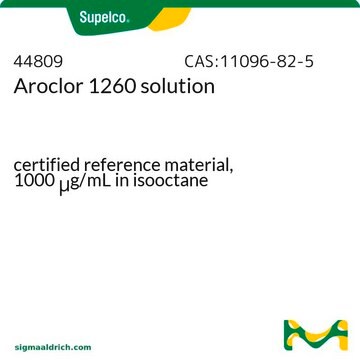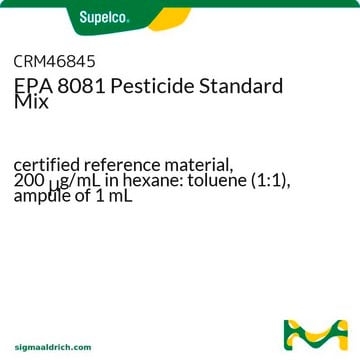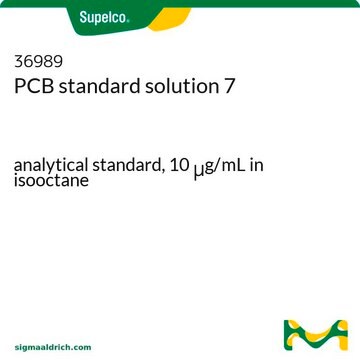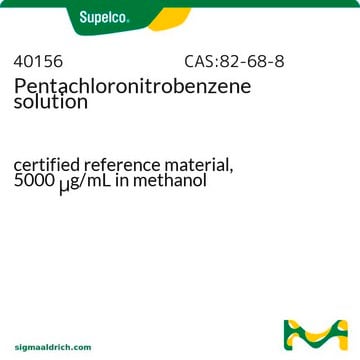31092
PCB No 209
analytical standard
Synonyme(s) :
Decachlorobiphenyl, 2,2′,3,3′,4,4′,5,5′,6,6′-PCB
About This Item
Produits recommandés
Qualité
analytical standard
Niveau de qualité
Durée de conservation
limited shelf life, expiry date on the label
Technique(s)
HPLC: suitable
gas chromatography (GC): suitable
Application(s)
environmental
Format
neat
Chaîne SMILES
Clc1c(Cl)c(Cl)c(c(Cl)c1Cl)-c2c(Cl)c(Cl)c(Cl)c(Cl)c2Cl
InChI
1S/C12Cl10/c13-3-1(4(14)8(18)11(21)7(3)17)2-5(15)9(19)12(22)10(20)6(2)16
Clé InChI
ONXPZLFXDMAPRO-UHFFFAOYSA-N
Vous recherchez des produits similaires ? Visite Guide de comparaison des produits
Catégories apparentées
Description générale
Application
Mention d'avertissement
Warning
Mentions de danger
Conseils de prudence
Classification des risques
Aquatic Acute 1 - Aquatic Chronic 1 - STOT RE 2
Organes cibles
Endocrine system
Code de la classe de stockage
11 - Combustible Solids
Classe de danger pour l'eau (WGK)
WGK 3
Point d'éclair (°F)
>212.0 °F
Point d'éclair (°C)
> 100.0 °C
Équipement de protection individuelle
dust mask type N95 (US), Eyeshields, Gloves
Choose from one of the most recent versions:
Déjà en possession de ce produit ?
Retrouvez la documentation relative aux produits que vous avez récemment achetés dans la Bibliothèque de documents.
Notre équipe de scientifiques dispose d'une expérience dans tous les secteurs de la recherche, notamment en sciences de la vie, science des matériaux, synthèse chimique, chromatographie, analyse et dans de nombreux autres domaines..
Contacter notre Service technique










